Air quality on New Year’s Eve – the impact of fireworks on urban air quality
“How do fireworks influence air quality in my city? What is the impact of fireworks on the air quality in my neighborhood?” Questions like these reach us quite often – particularly around this time of the year.
Fireworks indeed cause a spike in air pollution levels, especially in levels of particulate matter (PM). Depending on current weather this pollution can either disappear swiftly (e.g. in times of high humidity, when water droplets bond with particulates in the air and their increased weight lets them fall to the ground) or remain for hours or even days (e.g. during inversion weather conditions).
Demonstrating this impressively, particulate matter (PM10) levels nearing midnight of New Year’s Eve 2019 rose near and above 1,600 µg/m3 in some parts of Hamburg. The graphics below show aggregated hourly particulate matter levels as well as minute-by-minute sensor readings for three of our sensing locations in Hamburg: Fischmarkt, Holstenstraße and Wohlerspark.
-
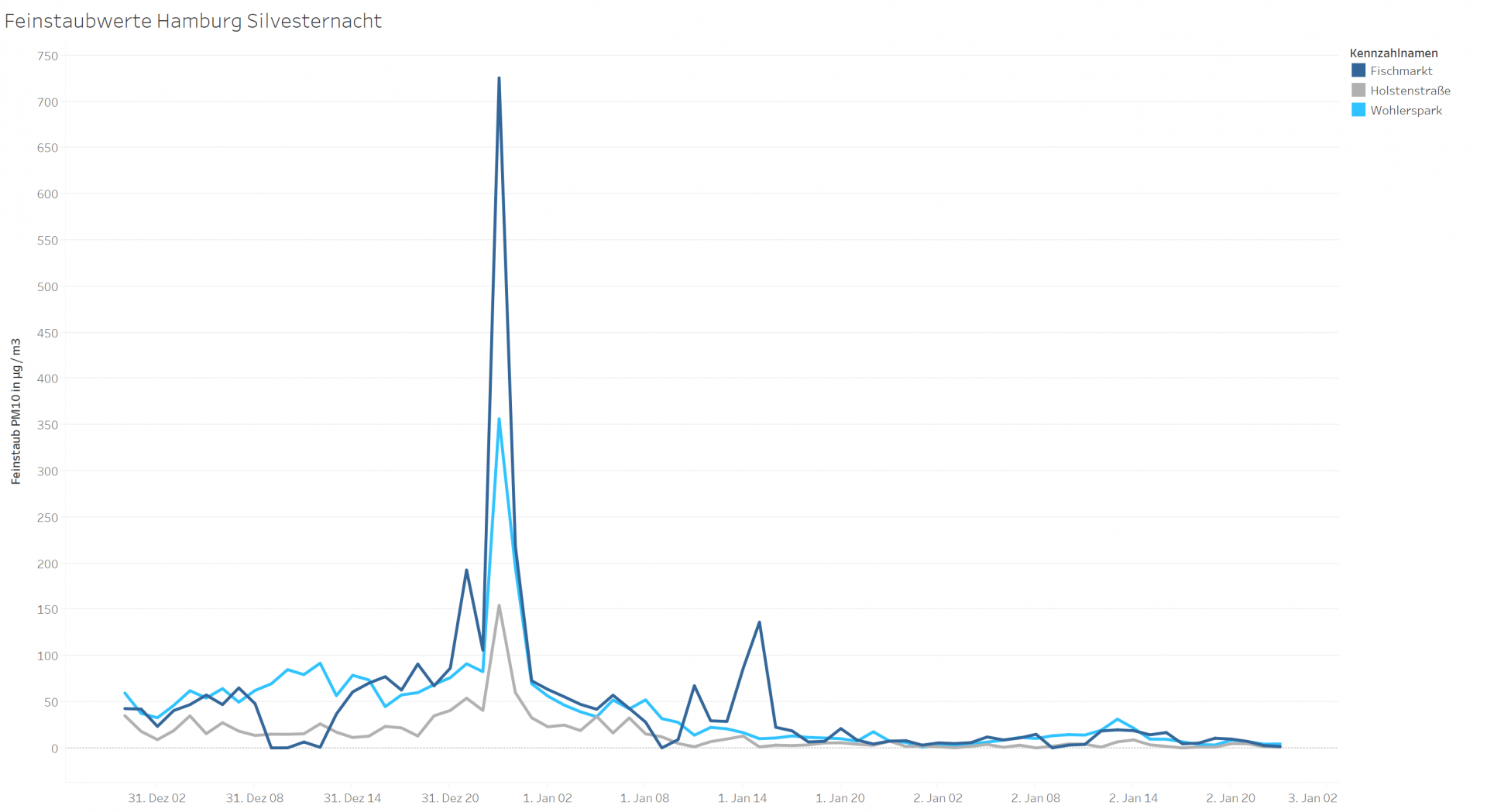
Particulate matter (PM10) levels in Hamburg from 31 December 2019 until 2 January 2020 – data aggregated by hour -
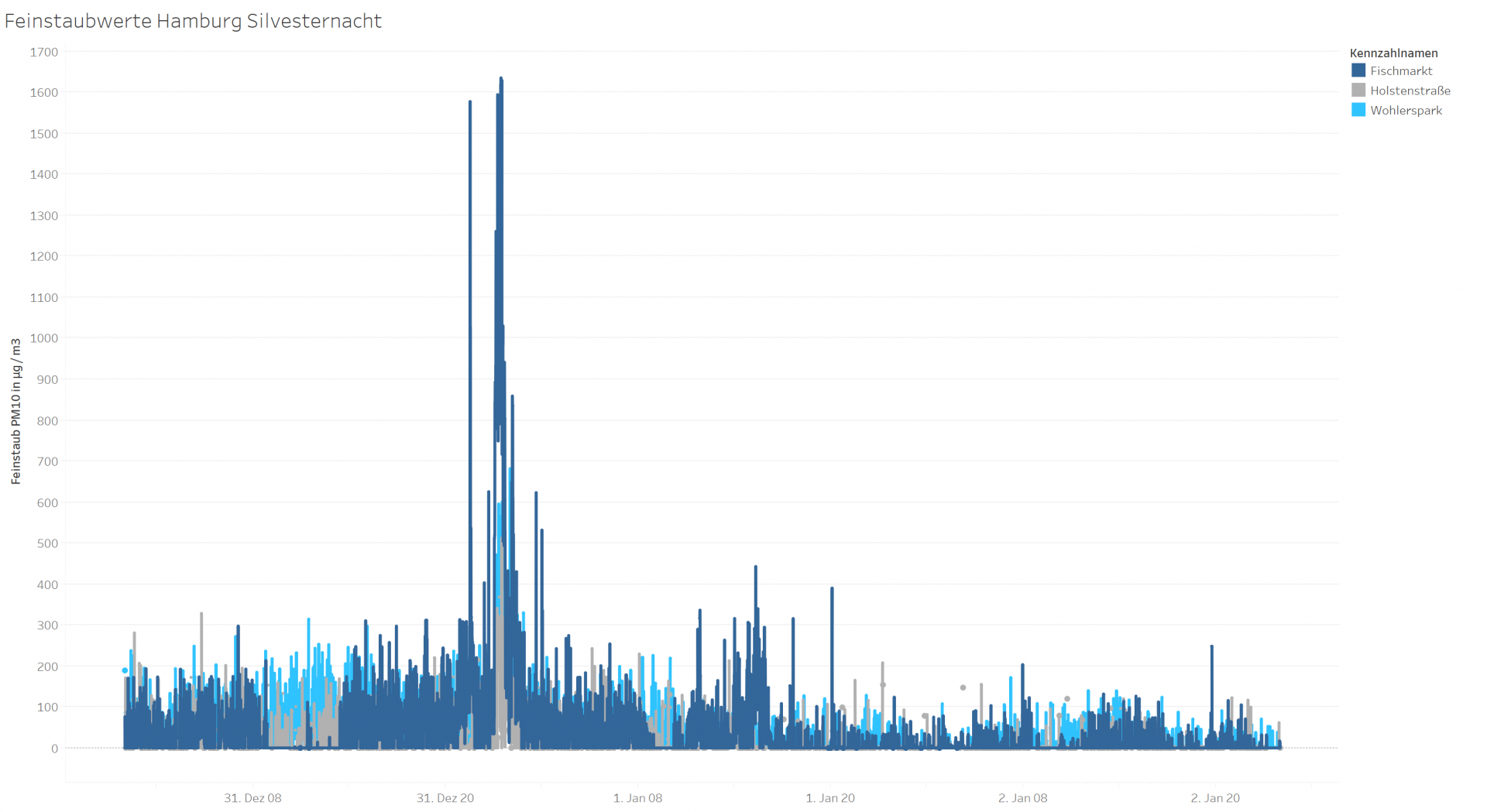
Particulate matter (PM10) levels in Hamburg from 31 December 2019 until 2 January 2020 – data aggregated by minute
In the European Common Air Quality Index (EU CAQI), hourly concentration levels exceeding 180 µg/m3 fall in the worst category.
The difference in Breeze Technologies’ real-time air quality and public administration data
Comparing the data from our air quality monitoring network with data shared by the municipal administration of the city of Hamburg (see the picture below) we can observe distinct differences: There is a delay in the rise of particulate matter levels; the maximum peak is lower but lasts much longer – why is that?
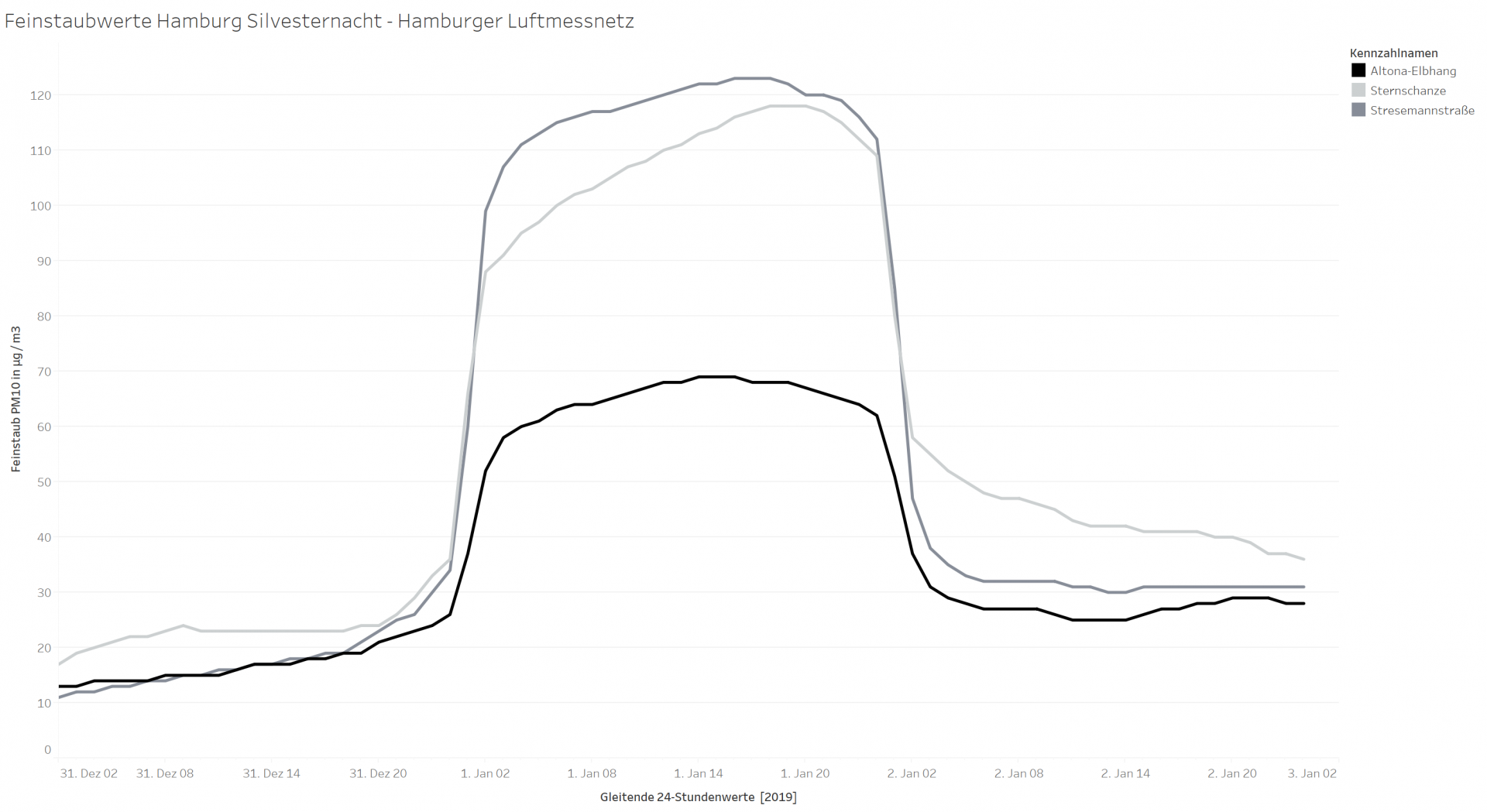
The reason is simple: The air quality monitoring network of the Hamburg municipality reports not real-time particulate matter levels, but reports a moving (floating) average of the last 24 hours. That means that on midnight of 31 December, the reported particulate matter level actually take into consideration the whole day before – when no special events like fireworks were occurring. On the other side, hourly reported averages on 1 January will include the peaks from around midnight for the whole day.
-
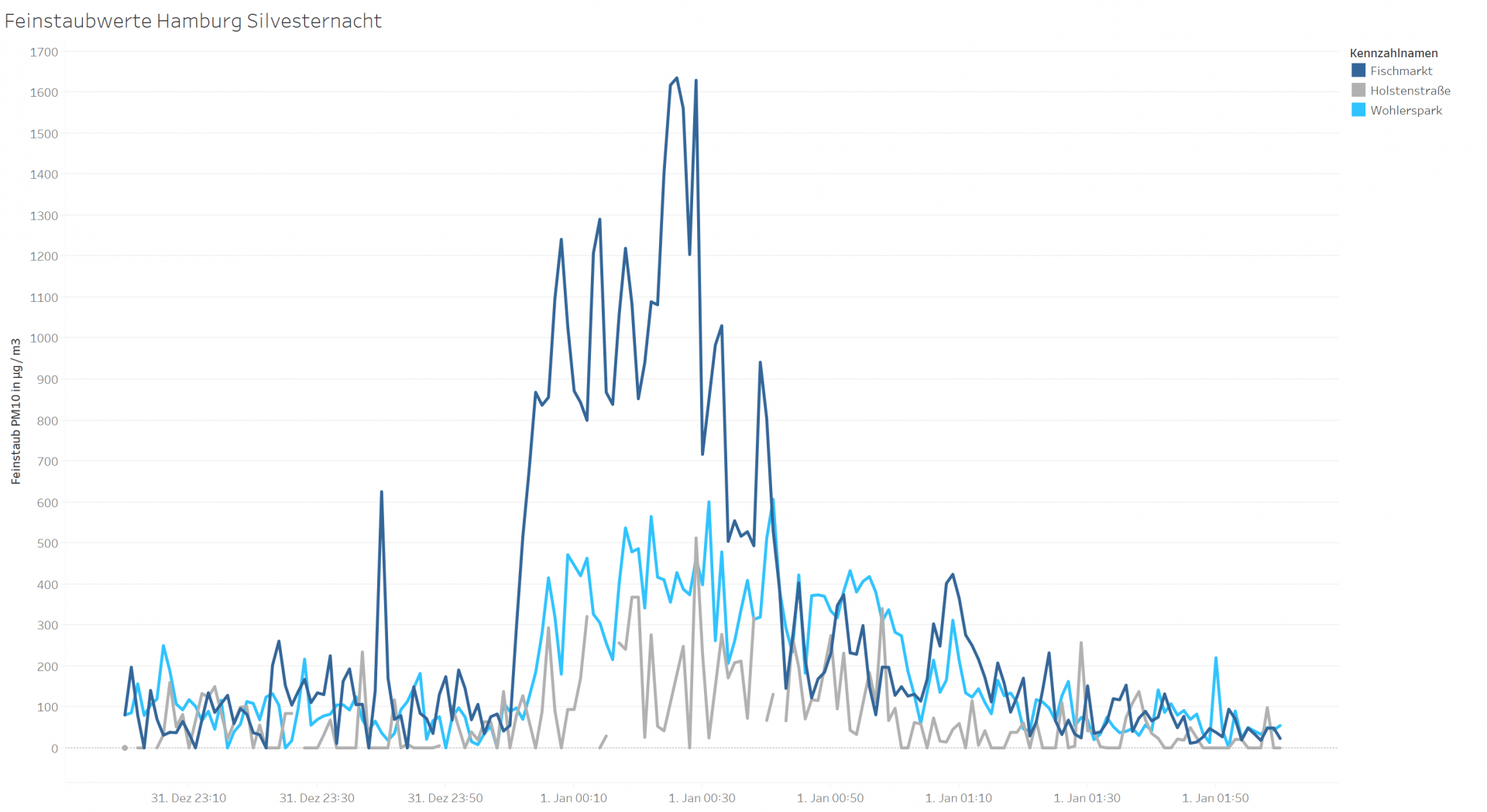
Our sensors show a clear peak of particulate matter (PM10) concentration just before and around midnight – the time when most of the fireworks are actually happening… -
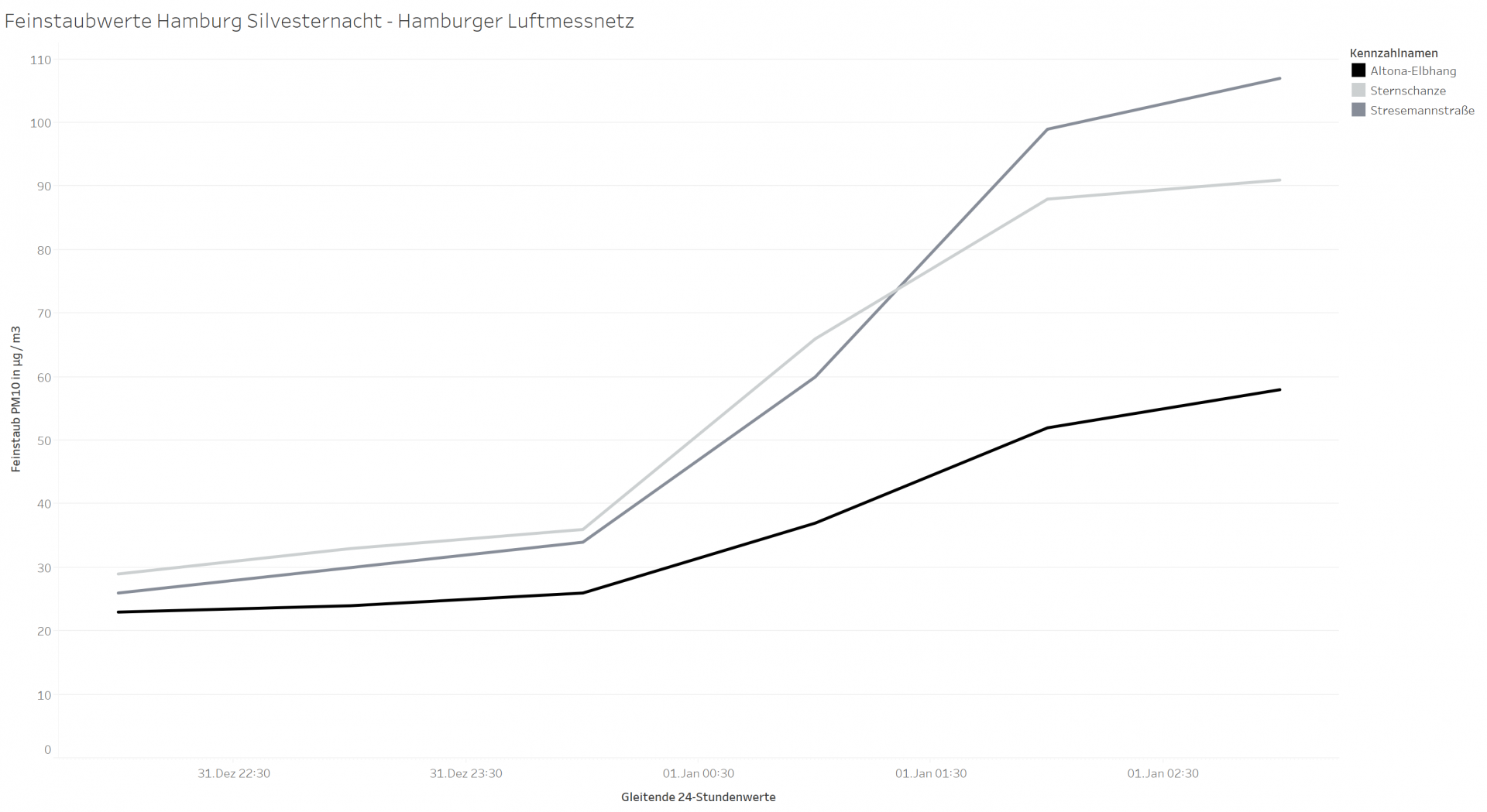
… while the city’s air quality sensing networks reported particulate matter (PM10) levels are only slowly increasing over time due to their moving average aggregation method.
Unfortunately, reporting a moving 24-hour-average of particulate matter levels is the current modus operandi for most environmental agencies and regulation focuses on pollution limits for the same. This leads to a multitude of challenges, most particularly that city agencies struggle to react to short-term events that create hazardously high concentrations of particulate matter, such as New Year’s Eve.
This is one of the benefits of Breeze Technologies’ air quality intelligence cloud: our system is able to automatically provide quality-assured real-time air quality data for all common air pollutants. The temporal resolution of our measurements goes down to 30 seconds to identify pollution events. In some of our projects, this information is used to identify heavy polluters in port areas or quantify the air quality impact of breaking trains near train stations.
If you are interested in more information about our solution, please refer to relevant solution pages on urban air quality monitoring and do not hesitate to contact us.

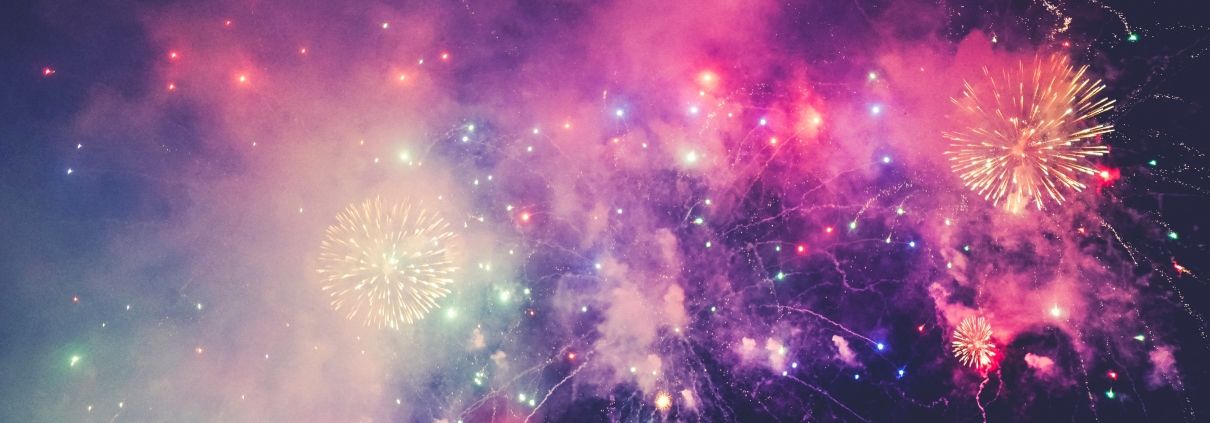 unsplash.com / Mike Enerio
unsplash.com / Mike Enerio
